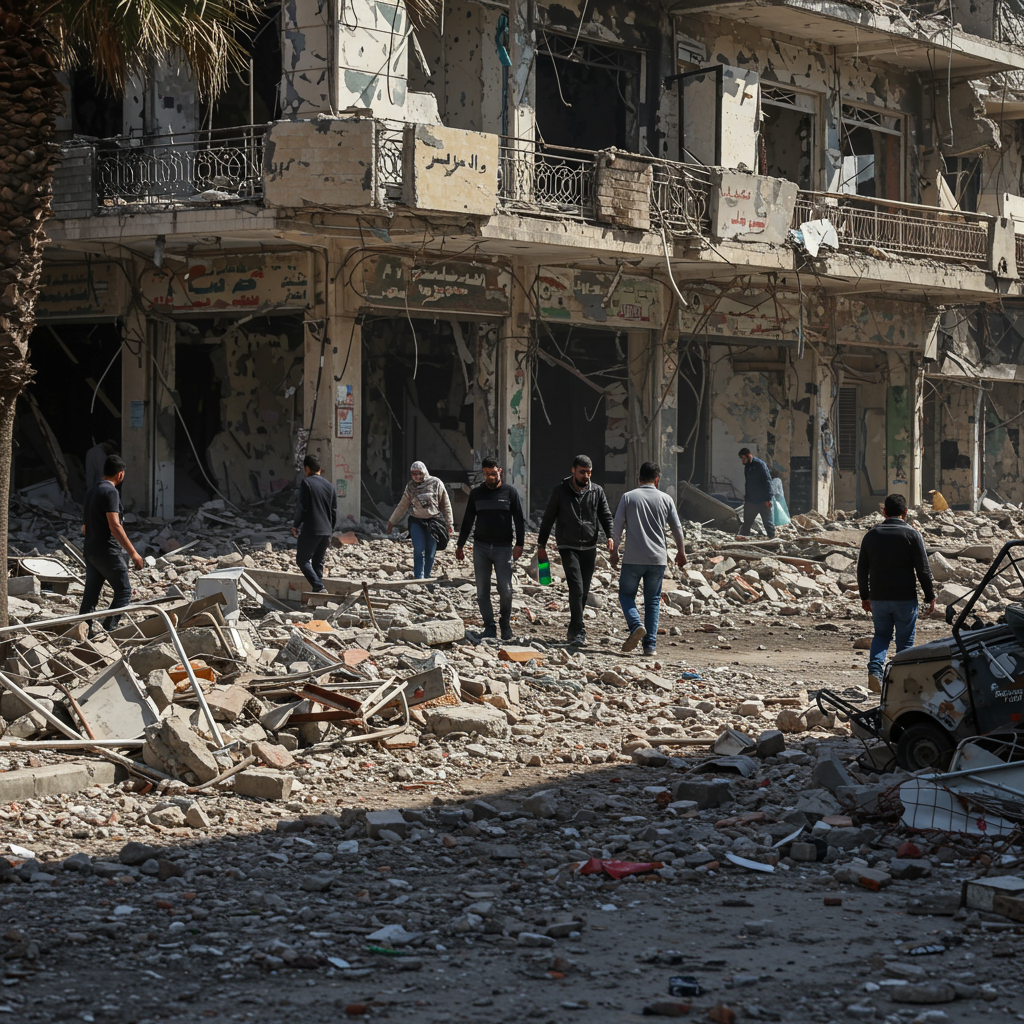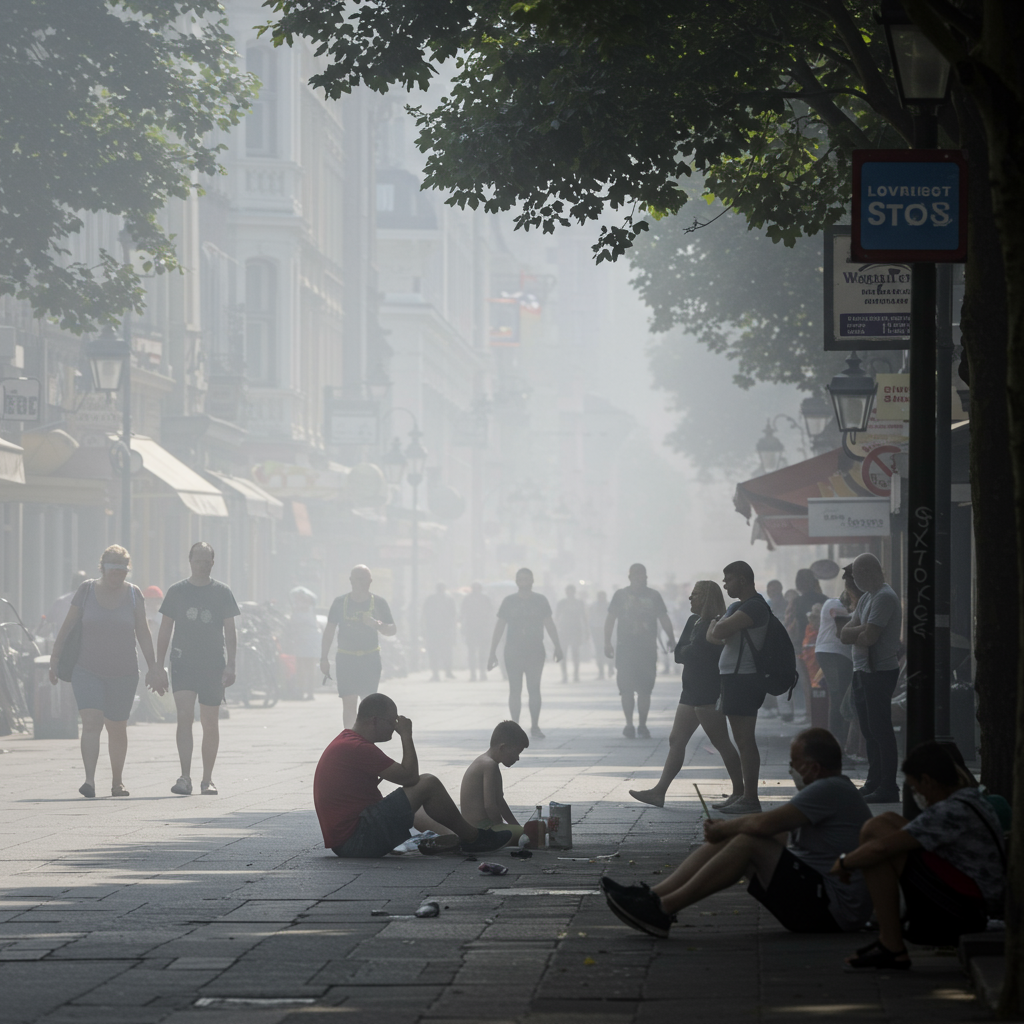Gaza experienced a day of devastating violence on July 1, 2025, as Israeli forces carried out airstrikes and engaged in gunfire, resulting in at least 74 Palestinian deaths. These casualties included families gathered in a crowded cafe and desperate civilians attempting to access <a href="https://news.quantosei.com/2025/07/01/beyond-anything-imaginable-dozens-killed-at-busy-gaza-seafront-cafe/” title=”Deadly Airstrike Devastates Busy Gaza City Cafe”>humanitarian aid. The grim events underscore the severe challenges facing Gaza’s population amidst the ongoing conflict, highlighting the catastrophic humanitarian crisis and the perilous conditions surrounding aid distribution.
Deadly Strikes Hit Crowded Gaza City Cafe
One of the most fatal incidents involved an Israeli airstrike on the Al-Baqa Cafe in Gaza City. Witnesses reported the cafe was packed with women and children seeking a rare moment of normalcy, including accessing internet and charging devices. Ali Abu Ateila, present during the attack, described the sudden impact of a warplane strike as shaking the building “like an earthquake.”
The strike left a scene of carnage. Health officials in northern Gaza reported at least 30 people were killed in the cafe, with dozens more critically wounded. Videos shared online reportedly showed the gruesome aftermath, with bloodied bodies and injured individuals being carried away. This cafe was one of the few businesses still managing to operate after twenty months of war.
Additional Airstrike Casualties
Beyond the Al-Baqa Cafe, other strikes added to the day’s death toll. Reports from Shifa Hospital indicated that two separate strikes on a Gaza City street killed 15 people. Near the town of Zawaida, Al-Aqsa hospital received six bodies from another building strike. These incidents collectively highlight the widespread risk to civilian life from aerial bombardments across the enclave.
Gunfire Targets Palestinians Seeking Vital Aid
Compounding the tragedy of the airstrikes, a significant number of deaths on the same day occurred as Palestinians sought essential food aid. According to witnesses, hospitals, and Gaza’s Health Ministry, Israeli forces killed dozens of people through gunfire during these desperate aid collection attempts. This included at least 11 people in southern Gaza, near Khan Younis, who were shot while returning from an aid site.
Nasser Hospital in Khan Younis received the bodies of individuals killed in this incident. They had reportedly just visited an aid distribution site linked to the Israeli and U.S.-backed Gaza Humanitarian Fund (GHF). This location was approximately 3 kilometers (1.8 miles) from where the shootings occurred, along one of the only accessible routes back. Witnesses like Monzer Hisham Ismail described troops attacking the crowds returning from the GHF hub with artillery. Another witness, Yousef Mahmoud Mokheimar, recounted seeing troops in tanks and vehicles firing warning shots before shooting “indiscriminately” into the crowds, hitting him in the leg and wounding a man trying to rescue him. Mokheimar also reported seeing troops detain six people, including three children, whose fate remained unknown.
Deadly Pattern Around Aid Distribution
The violence around aid sites is part of a disturbing trend. Health officials report over 500 Palestinians have been killed near aid distribution points over the past month alone. This deadly pattern has fueled controversy surrounding the aid distribution program.
Further aid-related casualties on July 1st included one death near a GHF hub in Rafah and another near the Netzarim corridor separating northern and southern Gaza. Ten more people were killed at a United Nations aid warehouse in northern Gaza, according to health officials. This series of incidents underscores the extreme danger Palestinians face simply trying to obtain food and essential supplies.
Charities Condemn Aid Program
The escalating death toll around aid sites has drawn international condemnation from humanitarian organizations. Over 165 international charities and NGOs, including major groups like Oxfam and Save the Children, have jointly called for the dismantling of the Gaza Humanitarian Fund (GHF). They describe the GHF as a “secretive” mechanism backed by the Israeli and U.S. governments.
These charities argue that Palestinians are forced into an “impossible choice: starve or risk being shot.” They criticize the GHF for limiting distribution to a few hubs guarded by armed contractors, often located near Israeli military positions. Aid groups like the UN deny Israeli accusations that Hamas systematically diverts aid and maintain that the GHF mechanism violates humanitarian principles and is ineffective, potentially even allowing food to be used as a weapon. Despite the criticism and mounting deaths, the GHF continues operations, stating its goal is to feed people and inviting others to join its efforts. Reports indicate this deadly pattern continued after July 1st, with at least seven more Palestinians killed seeking aid between late Monday and early Tuesday.
Worsening Humanitarian Crisis and Military Actions
The incidents on July 1st occurred amidst an intensification of Israeli bombardment across Gaza City and the nearby Jabaliya refugee camp. Israeli forces had issued widespread evacuation orders for large sections of northern Gaza just days prior. Residents described the massive overnight bombing as a “scorched earth” campaign, targeting empty buildings and civilian infrastructure.
Mohamed Mahdy, a Gaza City resident, spoke of the relentless bombing destroying remaining structures. The intensity of the strikes has made much of Gaza City and Jabaliya inaccessible, preventing ambulances from reaching people trapped under rubble.
Healthcare Collapse and Impact on Children
The conflict has brought Gaza’s healthcare system to the brink of collapse. UNICEF spokesperson James Elder has termed the situation a “war on children,” noting the unprecedented number of child casualties, estimated at 50,000 killed and maimed. He described thousands of children needing medical care on makeshift hospital floors, many undergoing amputations without anesthesia due to severe shortages of painkillers and antibiotics. Functional Intensive Care Units are scarce, and overwhelmed doctors work around the clock. Basic necessities like food, water, medicine, and fuel are critically scarce, with electricity largely unavailable since October 2023.
Beyond physical injuries, children are experiencing unprecedented levels of mental health trauma, requiring urgent counseling. Elder emphasizes that humanitarian aid must now encompass psychological support alongside traditional supplies.
Israeli Military Response
The Israeli military stated it was reviewing information about the attacks on July 1st. In the past, the military has asserted it fires warning shots at individuals acting suspiciously or approaching troops, including during aid collection. Israel maintains it only targets militants and blames civilian deaths on Hamas, accusing the group of operating within populated areas. The military also claims to have taken steps to improve aid organization, such as adding fencing, signage, and opening more routes, though these measures have not prevented the high number of deaths around aid distribution points.
Overall Toll of the Conflict
The violence on July 1st adds to a staggering death toll in Gaza. According to Gaza’s Health Ministry, over 56,000 Palestinians have been killed since the conflict began in October 2023. More than half of these fatalities are reported to be women and children, although the ministry’s count does not distinguish between civilians and combatants. The current phase of the conflict was initiated by a Hamas attack on Israel in October 2023, which resulted in approximately 1,200 deaths, mostly civilians, and the capture of 251 hostages. Around 50 hostages are believed to remain, many feared dead. The dire situation in Gaza underscores the severe humanitarian consequences of the ongoing conflict and the urgent need for protection for civilians and safe humanitarian access.
Frequently Asked Questions
What specific events led to the deaths of 74 Palestinians in Gaza on July 1, 2025?
The deaths resulted from two main types of incidents. An Israeli airstrike hit Al-Baqa Cafe in Gaza City, killing at least 30 people gathered there. Additionally, dozens more Palestinians were killed by gunfire while attempting to obtain desperately needed food aid, including incidents near Khan Younis, Rafah, the Netzarim corridor, and a UN warehouse.
Why are people being killed while trying to get food aid in Gaza?
Witnesses report Israeli forces firing on crowds attempting to reach aid distribution points. This often occurs around sites associated with the Gaza Humanitarian Fund (GHF), an aid mechanism supported by the Israeli and U.S. governments. Humanitarian groups criticize the GHF process as chaotic and dangerous, with people risking their lives due to restricted access and the proximity of distribution points to military positions, leading to a pattern where hundreds seeking aid have been killed in the past month.
What is the Gaza Humanitarian Fund (GHF) and why are aid groups calling for it to be disbanded?
The GHF is a new aid distribution mechanism in Gaza supported by Israel and the U.S., intended to replace UN-led efforts. Over 165 international charities are calling for its disbandment due to the repeated deaths and injuries of Palestinians trying to access aid through its sites. Critics argue the GHF mechanism limits access, uses armed contractors, violates humanitarian principles, and fails to ensure safe aid delivery, trapping Palestinians between starvation and the risk of being shot.
Conclusion
The events of July 1st, resulting in at least 74 deaths from a cafe airstrike and shootings of people seeking food, serve as a stark illustration of the extreme dangers facing civilians in Gaza. This single day’s violence underscores the broader humanitarian catastrophe, marked by intensified bombardments, a collapsing healthcare system, and a deadly crisis surrounding the distribution of essential aid. As international charities call for changes to the aid system and aid workers highlight the devastating impact on children, the urgent need for safe humanitarian access and an end to violence remains paramount for the population trapped within the besieged territory.



